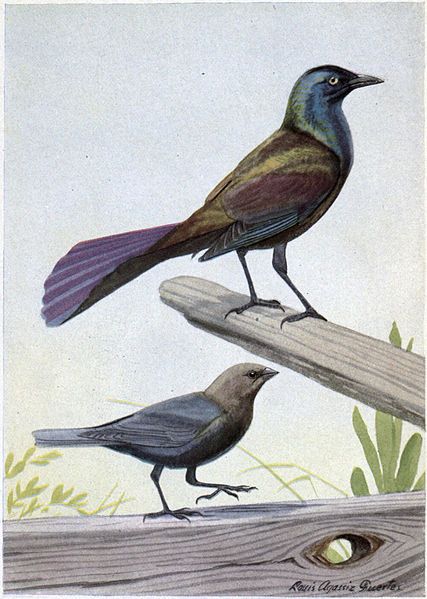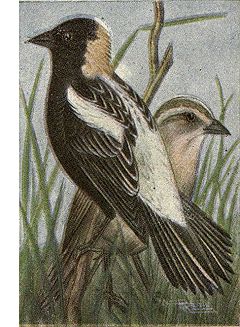 by Stephen Drew
by Stephen DrewWetmore’s Comprehensive Feather-Counting Report
In 1936 Alexander Wetmore of the U.S. National Museum in Washington, D.C., gathered all of the reports he could find in which someone or other counted how many feathers were on particular birds:
“The Number of Contour Feathers in Passeriform and Related Birds,” Alexander Wetmore, The Auk,
vol. 53, 1936, pp. 159–69.
“The work of feather counting is tedious and exacting,” Wetmore admitted, “and yields small result relative to the labor involved.” Among Wetmore’s gatherings from his predecessors:
Dr. Jonathan Dwight found 3235 feathers on a male Bobolink taken in spring. R.C. McGregor has recorded 1899 feathers on a Savannah sparrow (presumably a western form) and 6544 on a Glaucous winged Gull both enumerations being made from study skins. Miss Phoebe Knappen has reported 11,903 feathers on an adult female Mallard obtained March 19, 1932 at Pohick, Virginia, the bird being one that had died from phosphorus poisoning.
 Wetmore proceeded to have someone he could count on do some new counting on Wetmore’s behalf and for his credit:
Wetmore proceeded to have someone he could count on do some new counting on Wetmore’s behalf and for his credit:The actual labor of counting was done under my direct supervision by Marie Siebrecht (now Mrs. James Montroy) who, employed as an assistant, worked carefully and conscientiously at a long and somewhat tedious task...Wetmore kept records of where each bird entered his locus of control. Many came via a single collecting point:
I am indebted to Miss Phoebe Knappen for a number of birds killed by striking the Washington Monument during fall migration.Wetmore detailed how Montroy performed her function:
In this study contour feathers alone have been considered, the downs and filo plumes being disregarded. The feathers were plucked a few at a time by means of fine tweezers and were counted in lots of one hundred, a check mark being made for each hundred. At any interruption in the work the number counted was set down at once to avoid error....
The feathers as counted were placed in a glass beaker on which there was a paper cover held in place by a rubber band. By means of a small hole cut in the paper top it was possible to confine the feathers and to ascertain the weight of the plumage.....
With ordinary small birds one specimen was counted each day, two being handled on a few occasions. The work was exacting so that more prolonged effort was liable, through fatigue, to lead to errors.

No comments:
Post a Comment